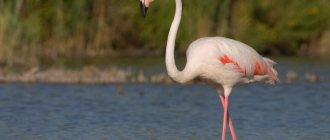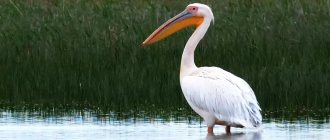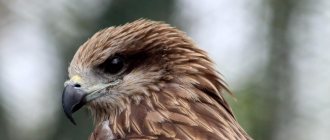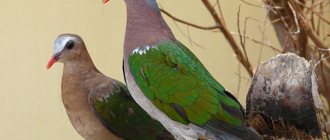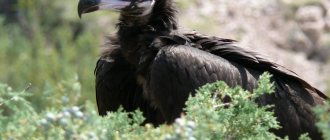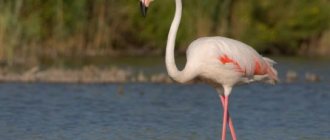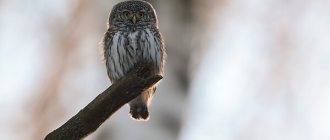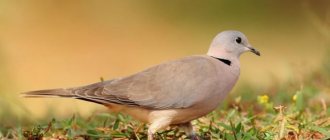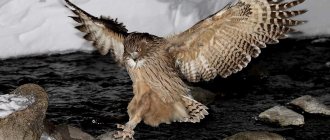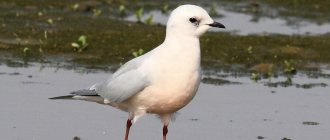27 December71539flamingo bird class
The common flamingo, or as it is also called, the pink flamingo, is a bird from the order Flamingidae. This type of flamingo is the largest and most common. The pink flamingo is truly a bird of paradise, which is naturally unique, graceful and very beautiful. In this article you will find a detailed description and photo of the pink flamingo, and also learn a lot about the common flamingo.
general characteristics
The history of the origin of flamingos is estimated at tens of millions of years. The homeland of the ancestors of these birds is considered to be an area in which a hot climate prevails, i.e. territories of Asia and Africa. At the same time, the study of the remains of flamingos also demonstrated the presence of these birds in Europe and South America.
Due to their unusual color and natural beauty, birds have been considered unusual birds since ancient times. Some peoples even attributed supernatural properties to them, endowing the image of flamingos with a special magical component. For example, in ancient Egypt, birds were considered a sacred object of worship, to which offerings were made in the hope of fulfilling one’s cherished desire.
In the modern world, the role of flamingos is viewed more prosaically, nevertheless paying tribute to their beauty and grace. Outwardly, the birds resemble representatives of long-legged animals like a heron or a crane, but officially there is no relationship between them.
The closest relative of the flamingo is the goose.
These birds have everything that can ensure their survival in the wild:
- Long and strong legs that help move in shallow water.
- Long neck, providing convenient search for food.
- Paws are webbed, allowing flamingos not to get stuck in the silt of water bodies.
- The beak is strong and curved, with teeth on the sides that help with straining out food.
Flamingos are inhabitants of swamps and ponds. Their average body weight is about 4 kg, while in nature you can find both larger and smaller individuals. The length is about 90-120 cm. The body is round in shape and ends with a small tail.
Regarding the size of the body, flamingos are considered the longest-legged birds, which also have the longest neck. In its normal position, the bird's neck is curved, but if it is stretched straight, its length will be equal to the length of the legs.
Flamingos have small wings that allow them to rise into the air with a long takeoff run. Due to the fact that the size of the wings is relatively small, birds have to constantly flap them to stay in the air. In flight conditions, the bird’s neck and legs do not bend and are stretched in one line. The flamingo's flight itself is quite smooth and swift.
The plumage of birds can be pink, scarlet or white. In this case, all newborn chicks are born completely white.
The color of the feathers develops as they grow older. Its color depends primarily on the nutritional characteristics and products included in the diet. The color is primarily due to carotene, which is found in plants. The more carotene, the more actively the pigments responsible for the brightness of the color are produced.
Flamingos do not have pronounced sexual dimorphism, since females and males have the same color. The largest representative of this species is the common flamingo, whose weight is about 4 kg with a height of 140 cm, and the smallest is the small flamingo, which weighs half as much and does not grow more than 90 cm.
Why was it called that?
Flamingo bends its neck
Flamingos are the oldest representatives of birds on earth. According to scientists, these birds originated in places with a hot, humid climate - Asia, Africa and Latin America. The birds were named by Latin Americans. In their dictionary there is a word "flamma" meaning "fire". The plumage of these birds really looks like fire - just as bright.
There is a legend according to which the mythical phoenix bird was reborn into a fiery flamingo.
Where does the flamingo live?
Flamingos do not live alone. They always unite in flocks, which are called colonies, and choose convenient places to live, located on the banks of small bodies of water. Birds prefer to settle in areas where they can get enough food, where they will not need additional long flights to search for food. Thus, birds choose to live in areas with a warm climate.
In some colonies you can find up to 100 thousand individuals.
The highest concentration of flamingos, as several million years ago, is found in the territories of Southeast and Central Asia and Africa. At the same time, birds also live in other areas that are suitable for a comfortable existence. The common flamingo lives in the southern parts of Spain and France, as well as in Kazakhstan and India. These are the only representatives of the family that are capable of making long flights, and during the migration period they can significantly deviate from the planned route, staying closer to the northern regions.
Extremely similar to the common flamingo, the Chilean variety lives in the tropical and subtropical territories of the South American Andes. In addition, on the islands of the Caribbean Sea there are colonies of the brightest colored flamingos - Caribbean or red.
Andean flamingos live high in the mountains, which are located at an altitude of 4 thousand meters above sea level.
Another highland species, the James flamingo, was previously thought to be extinct until its nests were discovered in Bolivia. Currently, the James flamingo lives in the Andes mountains in Peru, Argentina and Chile.
In the territories of African salt lakes there are the most numerous colonies of the smallest representatives of flamingos - small flamingos.
Elena
Ask a Question
Question to the expert
Can flamingos swim?
Flamingos can swim, although they do so quite rarely. Their long legs do not prevent them from swimming, since between their toes there are membranes that help them not only swim through the water, but also not fall into soft clay. Flamingos have membranes that resemble a mesh, due to which they can push off the water while swimming.
Interesting Facts
Flamingos, about which there are many beautiful stories and legends and interesting facts, have become almost legendary birds. Here are some facts:
- They got their name from the Latin word flamenco, which means “fire”.
- The health of pink flamingos is judged by the brightness of their plumage - the brighter the color, the healthier the bird.
- The sounds they make are reminiscent of the “gasping” of geese.
- When eating food, their head is turned upside down. They absorb water and filter food.
- During migration, their flight speed is 60 km per hour, and they fly more than 500 km to reach their new habitat.
- An ordinary flamingo can eat about 6-7 kg of food per day. A colony of 500,000 individuals in India consumes 140 tons of food per day.
- Pink flamingos spend 17-30% of the day preening their feathers.
- They live in large groups. Some colonies consist of millions of birds.
- Cubs are born with a straight beak, but by the age of three months they acquire a peculiar and unique curve.
- To rest, pink flamingos stand on one leg.
- In ancient Rome, local residents considered their tongue a delicacy. Today, meat and eggs are valued all over the world.
- Birds can be found not only in shallow waters, but also on high-mountain lakes. Birds tolerate temperature changes well.
- Males are somewhat larger and have longer legs than females.
The pink flamingo is an amazing and graceful bird, whose population is decreasing every year. They are constantly in the water in search of food, and birds eat not only during the day, but also at twilight. These are good and caring parents who have many enemies both from the animal world and from humans.
What does a flamingo eat?
Recommended by topic
Blackbirds Woodpecker Heron
Nutrition is one of the most significant elements in organizing the daily life of flamingos. This is due not only to the ability to maintain vital functions, but also to the fact that the quality of food consumed adds brightness to the plumage. At the same time, the diet of birds itself is not very diverse.
To a large extent, the basis of the diet consists of the inhabitants of reservoirs:
- Small crustaceans.
- Seaweed.
- Larvae.
- Worms.
Flamingos are relatively large birds, and therefore require a significant amount of food to satiate. It has to be obtained in salt lakes, where birds, with the help of their large and strong beaks, search for and capture food. To hold prey, a flamingo can twist its neck so that the top of its beak is down. By drawing in water and closing its beak, the bird is engaged in pushing the liquid out, which is similar to the straining procedure. As a result, water comes out through the teeth located along the edges, and the bird swallows the food that remains in the mouth.
Canthaxanthin, the pigment responsible for the pink color of flamingo feathers, is found in significant quantities in algae that birds eat. This pigment is also responsible for protection from excessively bright sunlight.
The same blue-green algae are eaten by small crustaceans, which subsequently also acquire a bright pink color. Subsequently, becoming part of the flamingo's prey, they increase the level of canthaxanthin in their body.
Flamingos are characterized by great gluttony. In one day, one adult can eat a volume of food that is approximately equivalent to a quarter of its weight. Since bird colonies are vast and can contain a significant number of individuals, their work is comparable in scale to processing and treatment stations for water bodies.
Moreover, each variety of flamingo is characterized by its own characteristics of eating, which depend on the structure of the beak. For example, the shape of the beak of Chilean and pink flamingos gives them the ability to hold large objects, such as crustaceans, in their mouths. At the same time, small flamingos have a small beak.
Due to this, they are able to filter much smaller objects, for example, single-celled algae.
Poll: Have you ever fed a flamingo?
Yes, I fed
0%
No, I didn’t feed you
100%
Voted: 1
Nutrition
The common flamingo feeds on larvae, small insects, blue-green and red algae, mollusks, crustaceans and small fish. Their tendency to eat both vegetation and small animals makes them omnivores.
Interesting fact! Flamingos have pink plumage because the algae they eat contains beta-carotene, an organic substance that contains a reddish-orange pigment. Molluscs and crustaceans contain similar pigment.
If a flamingo bird stops eating food containing carotenoids, its new feathers will begin to grow in a paler shade, and the pink color will eventually disappear. To get food, they have to plunge their feet into the mud and lower their heads under the water, moving from side to side. This process allows them to collect a mixture of water and food. The curved beak helps stir up water.
Pink flamingos can survive under water for several minutes due to the fact that they can hold their breath. Then they quickly stick their heads out and take a deep breath. The process happens so quickly that you may not even notice that the birds have taken oxygen into their lungs.
They receive water during the absorption of food, then, through the filtration process, they displace it from the body. They only need fresh water for drinking. To do this, they fly to another body of water or lick rainfall from their feathers.
Features of character and lifestyle
Of all the representatives of the flamingiformes family, only pink flamingos are classified as migratory birds. At the same time, individual colonies of other species can also lead a migratory lifestyle if they live in the northern parts. Birds that live in the south do not fly away for the winter, since there is simply no need for this.
In the southern climate, comfortable conditions are formed with sufficient food and warm weather.
When choosing a territory to live, flamingos stop at bodies of salt water. The best areas for birds are areas where there are no fish, but plankton is present in greater quantities.
Salt lakes are a rather aggressive external environment. Also, due to the presence of a significant amount of bird droppings in water bodies, various microorganisms develop in the water, the presence of which can cause diseases and inflammation. However, flamingos have extremely thick skin on their legs, and therefore they are not afraid of such external influences.
It is extremely important for birds to maintain proper hygiene. Flamingos periodically fly to fresh water in order to wash off salt, alkali, and also quench their thirst.
Flamingos devote most of their time to searching for food, and therefore they do not particularly care about other external events. They are not aggressive by nature, very conservative in behavior, and do not change existing habits throughout their lives.
Question to the expert
What is the lifespan of a flamingo?
In the wild, flamingos can live up to 30 years. In special conditions like a zoo or nature reserve, birds can live 40 years or more.
Lifestyle
Flock of flamingos
Flamingos lead a sedentary lifestyle. Only the Pink Flamingo, living in a temperate climate zone, makes seasonal migrations. Some colonies have to move due to climate change, drying up water bodies and a sharp reduction in food. During the migration period, the flock flies up to 1.5 thousand kilometers. In flight, birds reach speeds of up to 60 kilometers per hour.
A flock of flamingo birds look at the sky
Flamingos are socially developed birds. They live in large families, accumulating in flocks of thousands (the number reaches tens of thousands of birds). The family is divided into clans, which differ in the timing of egg laying. Ornithologists have noted that the desire to reproduce in birds appears only in conditions of mass population. Flamingos that live alone rarely breed offspring.
Flock of flamingos in the swamp
Flamingo is a wetland dweller. Birds lazily wander through the water during the daytime and look for food. Flamingos rarely and reluctantly fly. The bird has short wings and has to run to fly. In flight, flamingos often flap their wings. The streamlined shape of the body, which is achieved by straightening the legs and neck, allows one to stay in the air for a long time and make long flights.
Flamingo breeding
Flamingos live in a certain territory in entire colonies, which are divided into certain groups. Each group synchronizes with each other in accordance with the timing of egg laying. At the same time, the social structure of birds is characterized by the presence of various forms of expression of their attitude.
The mating season of flamingos begins with the formation of mass demonstrations. They first appear about 10 weeks before actual nesting. During this period, males demonstrate aggression, which helps them stand out and take a more advantageous position among their relatives during the organization of such mating games.
At the moment of formation of a couple, the partners become a single whole, which is never destroyed.
The female and the male protect their partner from danger, synchronously perform some daily activities, and constantly remain in the same space without leaving each other. Even partners' screams occur together. Thus, couples, as a rule, maintain their relationship for a long time, which makes them a real family.
The moment of direct laying of eggs in birds differs in time. It can take place from early May to July. Typically, the bird's nest is located near shallow water in a characteristic habitat area. The material used to create a nest is clay, silt, and dirt.
At the same time, some species of birds choose to build a nest in the area of rocks. Other species may simply lay their eggs directly in the sand without creating additional depressions.
A standard clutch contains from 1 to 3 eggs, but most often there are 2 eggs. The female incubates them simultaneously with the male. About a month later, the offspring are born. The chicks are born gray, and their beaks have an even shape.
Over time, newborns acquire features that are characteristic of flamingos.
This occurs at the age of 2.5 weeks. During this period, molting occurs for the first time, and the beak gradually bends, reaching the shape that is characteristic of adult individuals.
For two months, parents provide food for their offspring. They form a special secretion due to the work of the glands located in the esophagus. This “milk” contains a significant amount of protein, fat, and also includes plankton. A similar secret is secreted simultaneously in both females and males.
After 2-3 months, the grown-up offspring are completely free from parental care. At this moment, flamingos are ready for independent life, and therefore they themselves begin to search for food.
Description of the animal
The bird has an elegant coloration, from the most neutral - white, to an amazing dark purple. The bird's neck is long. Also, flamingo species have disproportionately long legs relative to the size of the body.
They feed on the banks of shallow water bodies. While feeding, they bend their necks so that their beaks are upside down.
| Scientific classification | |
| Domain | Eukaryotes |
| Kingdom | Animals |
| Sub-kingdom | Eumetazoans |
| No rank | Bilaterally symmetrical |
| No rank | Deuterostomes |
| Type | Chordata |
| Subtype | Vertebrates |
| Infratype | Ghostostomes |
| Superclass | Quadrupeds |
| Treasure | Amniotes |
| Class | Birds |
| Subclass | fantail birds |
| Infraclass | New palates |
| Treasure | Neoaves |
| Squad | Flamingoformes |
| Family | Flamingos |
| International scientific name | Phoenicopteridae |
What does it look like
Flamingos are a relict species whose representatives have thin legs and a sophisticated flexible neck. The weight of individuals varies from 3.5 to 4.4 kg. The wingspan ranges from 140 to 160 centimeters. The beak of individuals is large and massive. The shape of the beak is knee-shaped and curved downwards. The plumage is white with a clearly noticeable pinkish tint.
The male and female are similar in appearance due to the same color of feathers. But in terms of body size, male flamingos are always larger. The pink feather color becomes more intense the older the bird gets.
Juveniles are brownish-gray in color. They also have gray legs and beaks in the same color scheme. Flamingids have many external similarities with anseriformes:
- the shape of the paw and the shape of the beak are similar;
- they produce screams that are quite similar in sound;
- all their long, straight flight feathers molt at once;
- suffer from the same lice-eating pests.
Anatomical features and interaction algorithms resemble individuals of other species. Stork-like (long-legged) individuals are storks and herons that are similar to flamingos. Due to the similarity with these species of ankle-footed animals (storks), in scientific taxonomy, flamingos (Phoenicopterus) were separated into a separate family of new palates (Phoenicopteridae).
Character and lifestyle
Flamingiformes nest in shallow waters. In the wild, they can be observed on the shores of clean bodies of water (oceans, seas). Also, flaminga species live in highland and lowland areas of the planet, where there are salt or freshwater lakes. Birds like to settle in the subtropics and tropics, provided there is clean water there.
This may be a habitat convenient for them:
- Africa;
- Asia;
- America
- Southern Europe.
They die from unsuitable weather conditions and attacks from predators. Recently, experts have begun to keep statistics: how many flamingos die on high-voltage lines. The fact is that quite often these birds like to land on poles and wires that are under high voltage voltage to rest.
Important! Although this species is not on the verge of extinction, the flamingo was listed in the International Red Book.
By the nature of their behavior, they are sociable and love a pack lifestyle rather than being alone. It is important for them to be in a social environment, regardless of whether it is a large group of relatives or a small one. They fly in flocks, especially when flying from one place to another. They also prefer to stick with each other when they find a suitable nest site.
Varieties
There are several types of pink flamingos. Each species of this bird, to one degree or another, is more or less vulnerable to extinction. Current conservation status assigned to animals by IUCN (International Union for Conservation of Nature):
- Red – causing the least concern;
- Common (pink) - causing the least concern;
- Lesser flamingo - close to vulnerable;
- James's Flamingos are close to vulnerable;
- Chilean - close to vulnerable;
- Andean flamingos are in a vulnerable position.
What does it eat?
If you look from the side at how flamingos feed, it looks unusual: they arch their necks with a plastic and flexible movement, their beak turns in such a way that the upper jaw turns down. Small insects or other creatures that they feed on often get stuck between the horny growths in the beak. But the bird manages to pick up these particles with its tongue and swallow.
Protein-rich cyanobacteria are the flamingo species' favorite food. The beak of the lesser flamingo is lighter than that of its fellows, thanks to which the bird can more successfully obtain algae from bodies of water.
Where does it live?
Flaming species can often be migratory, nomadic and partially sedentary. The area of their mass habitat: Eurasia and Africa. In the European part, flamingo species nest in Spain, France (in the Camargue) and Italy.
The Mediterranean population is quite large compared to the European one. According to estimates, there are almost 60 thousand flamingos in the Mediterranean.
Worth knowing! Flamingos nest in open muddy areas near shallow salty reservoirs rich in crustaceans and algae with islands where they can hide from land-based predators.
Reproduction
Flamingos are constancy when it comes to their place of residence. They are inactive and prefer not to roam unnecessarily. They live in the same place suitable for the climate - and there they give birth to new offspring.
In subsequent times, they find new pairs. During the entire season, the female lays one single egg. The chick is born after 30 days. Both parents incubate the egg for a whole month. When the chick is born, its parents also watch it together and feed it in turn.
Natural enemies
Flamingos are easy prey for winged representatives that hunt in flight. Ferocious enemies include: hawks, falcons, night owls and barn owls. Birds of prey destroy their nests and eat their eggs.
A flock of kites quite often attacks nesting couples who are busy incubating eggs. Flamingos, distinguished by their brave disposition, protect their future offspring, fighting to the last with predatory enemies.
It is quite easy for wolves, foxes, jackals and other nimble predatory animals to catch flamingos. This bird is an easy prey because it cannot run fast. Outside the mating season, birds are slow and phlegmatic, which further exposes them to danger from outsiders. Predatory animals settle next to the flamingo colony, which allows them to observe the prey and then catch it at a convenient moment.
Note! All flamingos have webbed feet that not only provide stability when walking through mud, but the bird will also swim efficiently.
Natural enemies of flamingos
Bird colonies, which consist of a large number of individuals, often become attractive prey for predators. This is due to the fact that a large concentration of birds in one area almost certainly guarantees the capture of one of the birds.
Flamingos are characterized by the presence of the same enemies that are found in the wild and among other birds. Their enemies include large birds of prey such as falcons, kites, and eagles. These predators prefer to hunt chicks and young individuals and destroy nests in order to obtain eggs. At the same time, flamingos that form a married couple are, as a rule, able to repel enemies through common actions.
Among flamingos in a colony during the nesting period, mutual support is at a high level. When ill-wishers approach, birds are able to rush to the rescue, protecting not only their own nest, but also someone else’s.
Predators living on the ground can also hunt birds. These usually include wolves and foxes, who consider birds easy prey. This is due to the fact that predators only need to be careful when sneaking up to shallow water on the coast, and then they can easily catch one of the birds that did not have time to fly away from this place.
Due to the fact that flamingos rarely show aggression and are generally distinguished by a rather phlegmatic character, they practically do not demonstrate their fighting qualities. Similar character traits can be observed in birds exclusively during the mating season and during nesting.
Popular message topics
- Volcanoes of Russia
Volcanoes have always had the appearance of a dome-shaped elevation, which formed in those places in the earth's crust where there are cracks. Any volcano consists of a channel through which rocks, lava and ash periodically erupt. Scientists believe - Medieval cities
In the 10th-11th centuries. Agriculture and crafts developed. It was necessary to separate these industries. Trade in products and products of various artisans was active. Merchants settled in the cities and engaged in buying and selling. - Continents
The continents of the Earth are the largest natural complexes, washed by seas and oceans, and belonging to the layers of the lithosphere of planet Earth.
Orenburg region
Status: VI category. A rare vagrant with an irregular stay.
Spreading
Small groups of flamingos periodically appear in the Orenburg region during seasonal migrations and post-nesting migrations.
For the last quarter of the last century, flights to the Trinity Pond in the Sol-Iletsk region, on the lake, are mentioned. Koskol in Belyaevsky district, lake. Shalkar-Ega-Kara in the Svetlinsky district. In the fall of 2000 and 2001. small groups of flamingos were observed on the lake. Shalkar-Ega-Kara, and in 2001 also in the Ashchisay Steppe section of the Orenburg State Nature Reserve, where they kept on a fire pond near the cordon. At the beginning of April 2002, a flight into the area of the Iriklinsky reservoir was noted: three birds were noted in the mouth valley of the Suunduk River near the village. Kusem in Adamovsky district. The last entry into the reservoirs of the Orenburg steppe Trans-Urals was recorded at the end of the second ten days of July 2012, when a group of 13 wasps. observed in the coastal shallows of the northern reach of the lake. Shalkar-Ega-Kara near the regional center Svetly.
Number
The number of irregularly flying into the territory of the region is usually calculated in a few, with a maximum of one to one and a half dozen individuals.
Source: Red Book of the Orenburg Region. Animals and plants. Ed. Vasiliev A.S. (1998) Orenburg: Orenburg Book Publishing House
Kemerovo region
Status: VI category. A particularly valuable species.
Spreading
Incursions into the Kemerovo region occurred more than once. In 1907, flamingos were seen near the city of Kuznetsk. The most frequently observed flights were near the northern border of the Kemerovo region in the area of Tomsk in 1907, 1913, 1914, 1916, 1917, 1929, in the lower reaches of the river. Kiya - in 1914. In 1965, a pair of birds stayed in the Topkinsky region all summer. In 1966, a flock of flamingos was observed there. In the fall of 1963 at the mouth of the river. Kozhukh (the left tributary of the Kiya River) a group of flamingos appeared. One of them was mined. In the fall of 1968, about 10 individuals were recorded in the swamps in the northeastern part of the region. In January 1972, a dead flamingo was found near the city of Guryevsk. His effigy is in the Guryev Museum. Flamingos were encountered at the end of May 2008 on the Tom River near the former village of Bogdanovo. The last flight of flamingos occurred in 2011: on November 16, 5 birds were seen in the Kargasoksky district of the Tomsk region, while two exhausted birds were caught. On November 17, three birds were seen on the river. Drake in the southwest of the Tashtagol region.
Number
Rare irregular flights.
Source: Red Book of the Kemerovo Region. Volume II, Rare and Endangered Animal Species, 2nd Edition. Ed. Skalon N.V. (2012) “Asia print”, Kemerovo
Tambov Region
Status: VI category. Rare species with irregular presence.
Spreading
Provided for the Tambov region without specifying specific data. In the Tambov region - a randomly vagrant species.
Number
There is no information on the region.
Source: Red Book of the Tambov Region: Animals. Ed. HE. Artaev, E.A. Ganzha, V.V. Glushkov, A.N. Gudina, A.V. Emelyanov, Yu.V. Zakharov, R.N. Ishin, E.V. Kalinkina (2012) Tambov: Yulis Publishing House LLC
Tomsk region
Status: III category. Stenotopic view.
Spreading
Vagrant individuals were found in almost all areas of the Tomsk region.
Number
Birds usually fly to the Tomsk region in the fall, but not every year and in total there are one to three cases. They are found mostly singly. If the vagrants are not caught, they usually die.
Source: Red Book of the Tomsk Region. Ed. Revushkin A.S. (2002) Tomsk: Tomsk University Publishing House
Primorsky Krai
Status: III category. A rare bird, sporadically distributed over large areas.
Distribution and abundance
A flock of flamingos (about 20 individuals) was encountered near the mouth of the river. Foggy in the last days of October 1984. This is the second meeting in Primorye; For the first time, flamingos were observed in the region at the end of April - beginning of May 1977 at the mouth of the river. Kievka. Populations living in Eurasia are characterized by long-distance flights, but encounters in Primorye can be considered the most distant from nesting sites.
Source: Red Book of Primorsky Territory: Animals. Rare and endangered animal species. (2005) Vladivostok: AVK "Orange"
Novosibirsk region
Status: II category. An endangered species.
Spreading
Random flights, usually confined to late autumn. Unusually mass migrations were observed in October-November 1907. In this year, birds were noted significantly to the east and north. In recent years, two cases of flamingos flying into the region have been known. One young bird was found in November 1978 on the ice of lake. Ubinskoe, also a young and emaciated flamingo was met in the fall of 1997 on the lake. Chebachy (Karasuk district).
Number
The number is subject to significant fluctuations.
Source: Red Book of the Novosibirsk Region. Animals, plants and mushrooms. (2008) Novosibirsk: Arta
Irkutsk region
Status: IV category. Regularly vagrant.
Spreading
A vagrant species in the Irkutsk region. At the end of the 19th century, flamingos were found in the vicinity of the village. Kultuk and in the valley of the river. Irkut. A live flamingo was caught on the Lena River in the Ust-Kutsk region in early May 1947. The following year, in the fall, three flamingos were met on the river. Shauna. On November 2, 1971, a young bird was encountered at the Bratsk Reservoir in the vicinity of the village. Malyshevka. On November 10, 1997, a young flamingo was picked up on the river. Bol. Erema and another one on the river. Rogue in Biryusa's pool. Flamingos are also known to fly to Yakutia.
Number
In the Irkutsk region, flights of single individuals and small flocks (up to three birds) have been recorded.
Source: Red Book of the Irkutsk Region. Ed. Gaikova O.Yu., Popov V.V., Abarinova N.G., Berman M.I. and others (2010) Irkutsk: LLC Publishing House Time of Wanderings
Republic of Crimea
Status: III category. Rare view.
Distribution and abundance
In Crimea, it is a vagrant and irregularly wintering species; all registrations occur during the period of the year from the beginning of November to the end of March. Until the mid-90s of the XX century. was observed sporadically. Since 1997, on the salt lake Adzhigol east of Feodosia, there have been several cases of long-term (up to 2 months) wintering of groups of 3–5 young individuals. In March, a flock of 23 birds was noted on the Kerch Peninsula.
Source: Red Book of the Republic of Crimea. Animals. Rep. ed. S.P. Ivanov, A.V. Fateryga (2015) Ministry of Ecology and Natural Resources of the Republic of Crimea. IT ARIAL LLC, Simferopol
